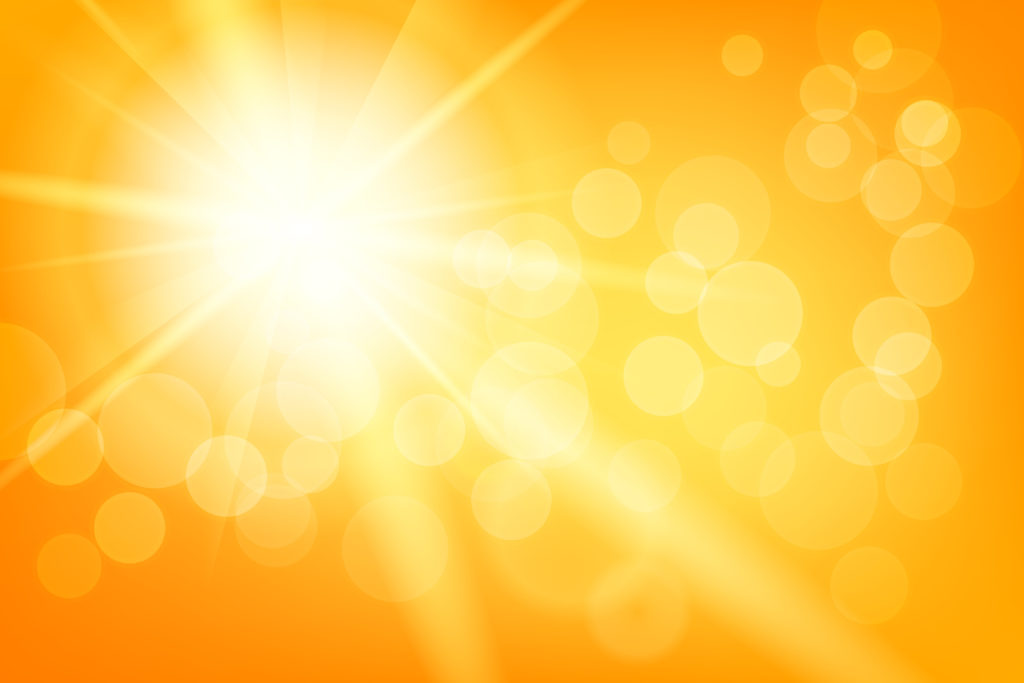With increasing intensity of the sun light sleep, the workload grows
For many people, the lack of light in the winter months, you will be tired and lacking in motivation. Certain insects, however, are sleepy when the sun goes down light is particularly intense. The researchers have now found now.
Effects of different light intensities on the day-night rhythm
Health experts advise to pay attention to sufficient light, as a haunt otherwise quickly fatigue. In the case of certain insects, however, the Sleep, grows with increasing intensity of the sunlight, the lunch break is extended and the recovery of the activity in shifts in the evening. This is the result of researchers from Germany and the United States, which had investigated what the effects of different light intensities on the day-night-rhythm of the fruit fly, Drosophila.

Internal clock is synchronized
“We were able to show that light is synchronized with light, medium, and high intensity on different, specific Due to the internal clock in the brain of the Fly on the 24-hour day,” explained Prof. Dr. Charlotte Helfrich-Förster from the Julius-Maximilians-University of Würzburg (JMU) in a message.
Together with her former PhD students, Dr. Matthias Schlichting, who is now conducting research in the laboratory of the Nobel laureate for physiology of 2017, Michael Rosbash, Brandeis University, Waltham, Massachusetts (USA), she has headed the study.
The team’s findings were published in the current issue of the journal “The Journal of Neuroscience”.
Delayed Start in the usual evening activities
The experiments show that light intensity affects the behavior patterns of fruit flies. Interestingly, a significantly extended “Siesta” of the fruit fly by an average of about an hour, at least 30 minutes.
This is accompanied by a delayed Start was in the usual evening activities, which have been recorded by the flies in the rule with a delay of one to two hours.
Also, this behaviour changes at the molecular level, managers were able to identify the researchers: special photo receptors outside the retina, called Hofbauer-Buchner Eyelet, or HB eyelets known.
These microscopic “extra eyes” – each of them consists of just four sensory cells – are only for 30 years. They were discovered in 1989 by the würzburg biologists, Alois Hofbauer and Erich Buchner.
By high light intensities, the Siesta of the fly is reinforced
“We were the first to show that the Hofbauer-Buchner Eyelet respond to high light intensities, and the Siesta of the flies increase,” said Helfrich-Förster.
The path that you take is multi-stage: On specific acetylcholine receptors the HB-eyelets have an effect on a subset of clock neurons, increasing their Calcium levels.
As a consequence, the neurons are empty in the rear part of the fly brain for a specific neuro – peptide, the “Pigment-Dispersing Factor” (PDF).
There PDF affects the activity of other clock neurons that regulate the expression of the Siesta and the beginning of the evening activity.
According to scientists, this is a reaction to strong light in the fruit fly makes sense.
“This is a major mechanism in strong, possibly harmful light during the noon to avoid of the time,” said the Neurobiologist.
Finally, high light intensities are often associated with hot summer days, which can be of particular value to insects dangerous because they could quickly dry out, and also because they are discovered in the bright light of day more easily by their predators.
Comparable structures in humans
To exclude the possibility that it is not the intense light irradiation, but may be related to the development of heat is also a trigger for the extended lunch sleep, carried out by the researchers to control their experiments to specific, genetically-engineered flies.
The internal clock will not respond to changes in temperature, but the flies still show the changed behavior. This suggests that the light entry is responsible for the extended afternoon NAP and late evening activity.
According to the authors, the results of their study “show surprising Parallels to the mammalian mechanisms”.
Also mammals, and also humans, have specialized photoreceptors, the strong light to perceive, and their signals directly to the inner clock in a special area of the midbrain (Hypothalamus).
Whether their activation leads in humans to an extension of the Siesta, is not known. The scientists consider it quite possible. (ad)
